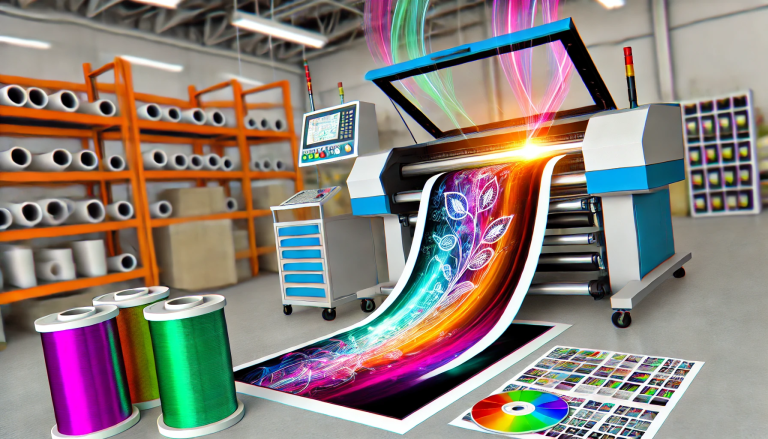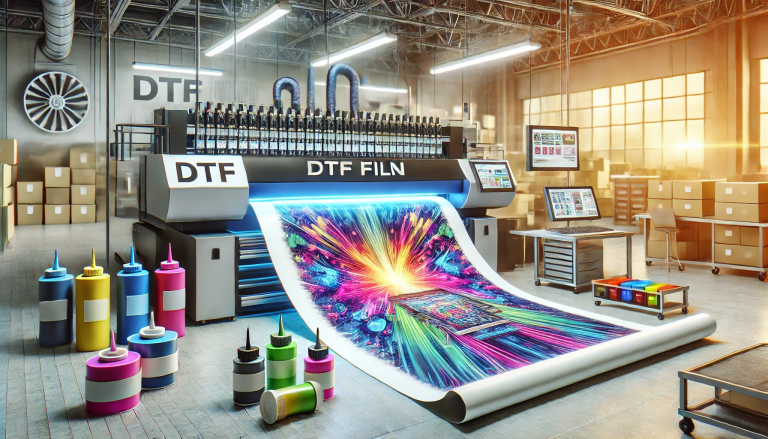“DTF Heat Transfer on a Hat: A Detailed Guide” -MAXDTF- DTF A4 Film Supplier, DTF Transfer Film glossy Manufacturer, Made in China
1. Gather Your Materials
Before starting, ensure you have all the necessary materials:
- DTF Printer: A specialized printer capable of handling DTF inks and films.
- DTF Inks: These are specially formulated for DTF printing and are typically water-based.
- DTF Film: A polyethylene terephthalate (PET) film that will carry your design to the textile.
- Powder Adhesive: A fine powder that melts and binds the ink to the fabric.
- Heat Press: Used to transfer the print from the film to the textile.
- Software: Graphic design software to create and manage your designs.
2. Design Preparation
Creating a compelling design is the first step in the DTF transfer process.
- Use Compatible Software: Programs like Adobe Illustrator or CorelDRAW are ideal for creating designs. Ensure your design is mirrored since it will be printed in reverse onto the film.
- Consider the Colors: DTF printing allows for vibrant, full-color images, so take advantage of this by incorporating a wide range of colors into your design.
- Optimize for Printing: Ensure your design’s resolution is high enough to avoid pixelation once printed. Typically, a resolution of 300 DPI (dots per inch) is recommended.
3. Printing the Design
With your design ready, it’s time to print it onto the DTF film.
- Load the DTF Film: Insert the film into your DTF printer with the matte side facing up; this is where the ink will settle.
- Printer Settings: Adjust the printer settings to suit DTF printing, which often involves higher ink volumes and slower printing speeds to ensure saturation and precision.
- Print the Design: Execute the print command in your printer software, and watch as your design materializes on the film.
4. Applying the Powder Adhesive
Once printed, the design needs to be coated with powder adhesive to ensure it adheres properly to the textile.
- Apply the Powder: Evenly sprinkle the adhesive powder over the wet ink. Make sure the entire design is covered.
- Melt the Powder: Use a heat gun or pass the film through a dryer to melt the powder slightly. This step secures the powder to the ink without fully curing it.
5. Transferring the Print
The final step is to transfer the print from the film to your fabric using a heat press.
- Preheat the Fabric: Place the fabric on the heat press and preheat it for a few seconds to remove moisture and wrinkles.
- Position the Film: Lay the film on the fabric, printed side down.
- Heat Press: Apply heat and pressure according to the specifications of your DTF system (usually around 160°C for 15 seconds).
- Peel the Film: Once done, peel the film off the fabric. This should be done either hot or cold, depending on the type of film and adhesive used.
6. Finishing Touches
After peeling, it’s essential to give the print a final press.
- Cover the Print: Use a silicone or Teflon sheet to cover the newly transferred print.
- Final Press: Press it again for another 5-10 seconds to ensure the design is completely set.
Conclusion
Creating DTF transfers might seem complex at first, but with practice, it becomes a straightforward process. The key to perfecting DTF printing lies in meticulous attention to detail, from design creation to the final press. By following these steps and consistently refining your technique, you can produce high-quality, durable prints that stand out in the competitive world of textile decoration.




